Which Test Gives a Better Estimation of the Friction Angle?
Important Point
Usually, the economics of the project dictates the type of test you would use for the determination of the friction angle.
Nonetheless, the best test to determine the friction angle of soil is the one that is more analogous to the problem at hand.
For example, if you are to determine the bearing capacity of a square footing, the triaxial test is the best one.
Introduction of USCS ( Unified Soil Classification System )
The original form of this system was proposed by Casagrande in 1942 for use in the airfield construction works undertaken by the Army Corps of Engineers during World War II.
In cooperation with the U.S. Bureau of Reclamation, this system was revised in 1952. At present, it is used widely by engineers (ASTM Test Designation D-2487). The Unified classification system is presented in Table 2.
| Unit | Symbols | Description |
| Primary | G | Gravel |
| S | Sand | |
| M | Silt | |
| C | Clay | |
| O | Organic | |
| Pt | Peat | |
| Secondary | W | Well-Graded |
| P | Poorly Graded | |
| M | Non-Plastic Fines | |
| C | Plastic Fines | |
| L | Low Plasticity | |
| H | High Plasticity |
Table 1 – Symbols Used in USCS
a Gravels with 5 to 12% fine require dual symbols: GW-GM, GW-GC, GP-GM, GP-GC.
b Sands with 5 to 12% fines require dual symbols: SW-SM, SW-SC, SP-SM, SP-SC.
c Cu = D60 / D10 ; Cc = ( D 30 )2 / ( D60 x D10 )
d If 4 ≤ PI ≤ 7 and plots in the hatched area in below fig (Plasticity chart), use dual symbol GC-GM or SC-SM.
e If 4 ≤ PI ≤ 7 and plots in the hatched area in below fig (Plasticity chart), use dual symbol CL-ML.
Plasticity chart
For proper classification according to this system, some or all of the following information must be known:
1. Percent of gravel — That is, the fraction passing the 76.2-mm sieve and retained on the No. 4 sieve (4.75-mm opening)
2. Percent of sand — That is, the fraction passing the No. 4 sieve (4.75-mm opening) and retained on the No. 200 sieve (0.075-mm opening)
3. Percent of silt and clay — That is, the fraction finer than the No. 200 sieve (0.075-mm opening)
4. Uniformity coefficient (Cu) and the coefficient of gradation (Cc)
5. Liquid limit and plasticity index of the portion of soil passing the No. 40 sieve
The group symbols for coarse-grained gravelly soils are GW, GP, GM, GC, GC-GM, GW-GM, GW-GC, GP-GM, and GP-GC.
Similarly, the group symbols for fine-grained soils are CL, ML, OL, CH, MH, OH, CL-ML, and Pt.
• Fine Fraction = Percent Passing No. 200 Sieve
• Coarse Fraction = Percent Retained on No. 200 Sieve
• Gravel Fraction = Percent Retained on No. 4 Sieve
• Sand Fraction = (Percent Retained on No. 200 Sieve) – (Percent Retained on No. 4 Sieve)
USCS Classifies Soils into Two Broad Categories
Coarse-Grained Soils—If more than 50% of the soil is retained on No. 200 (0.075 mm) sieve, it is designated as coarse-grained soil. There are 8 groups of coarse-grained soils.
Fine-Grained Soils—If more than 50% of the soil passes No. 200 sieve, it is called fine-grained soil. There are 6 groups of fine-grained soils.
Coarse-Grained Soils
The coarse-grained soils are designated as gravel (G) if 50% or more of a coarse fraction (plus 0.075 mm) is retained on No. 4 (4.75 mm) sieve; otherwise, it is termed sand (S).
If the coarse-grained soils contain less than 5% fines and are well-graded (W), they are given the symbols GW and SW, and if poorly graded (P), symbols GP and SP.
The criteria for well-grading are given in the above table 1. If the coarse-grained soils contain more than 12% fines, these are designated as GM, GC, SM, or SC, as per the criteria given.
If the percentage of fines is between 5 to 12% dual symbols such as GW-GM, SP-SM, are used.
Also, read: Classification of Stone Work | What Is Stone Masonry
Fine-Grained Soils
Fine-grained soils are further divided into two types :
1. Soils of low compressibility (L) if the liquid limit is 50% or less. These are given the symbols ML, CL, and OL.
2. Soils of high compressibility (H) if the liquid limit is more than 50%. These are given the symbols MH, CH, and OH.
The exact type of soil is determined from the plasticity chart (above Fig). The A-line has the equation Ip = 0.73 (wt– 20).
It separates the clays from silts. When the plasticity index and the liquid limit plot in the hatched portion of the plasticity chart, the soil is given double symbol CL- ML.
The inorganic soil ML and MH and the organic soils OL, OH plot in the same zones of the plasticity chart. The distinction between the inorganic and organic soils is made by oven-drying.
If oven drying decreases the liquid limit by 30% or more, the soil is classified organic (OL or OH); otherwise, inorganic (ML or MH)
Highly Organic Soils
Highly organic soils are identified by visual inspection. These soils are termed peat (Pt).
Uscs Soil Classification Astm
The ASTM version of the Unified Soil Classification System is ASTM D2487-17: Standard Practice for Classification of Soils for Engineering Purposes (Unified Soil Classification System). This classification system is based on particle-size characteristics, liquid limit, and plasticity index.
Uscs Soil Classification Grain Size
Soils are broadly classified into three divisions: Coarse grained soils: In these soils, 50% or more of the total material by weight is larger than 75 micron IS sieve size. Fine grained soils: In these soils, 50% or more of the total material by weight is smaller than 75 micron IS sieve size.
Coarse-Grained Soils
Coarse-grained soil refers to the soil in which the grains are between 0.075 mm and 60 mm accounting for more than 50% of its total mass
Uscs Soil Classification
The Unified Soil Classification System (USCS) is a widely used system for classifying soils based on their engineering properties. The USCS was developed by a committee of the United States Army Corps of Engineers, the United States Bureau of Reclamation, and the Soil Conservation Service in the late 1940s and early 1950s.
Uscs Classification
The USCS (Unified Soil Classification System) is a widely used soil classification system that classifies soils based on their physical and engineering properties. The USCS divides soils into two broad categories: coarse-grained soils and fine-grained soils. The classification of soils is based on two factors: grain size distribution and plasticity index.
What Is Uscs?
USCS stands for “Unified Soil Classification System”. It is a standardized system for classifying soils based on their physical and engineering properties. The system was developed by the United States Bureau of Reclamation and the US Army Corps of Engineers in the 1950s to provide a consistent method for characterizing soils for engineering and construction purposes.
Plasticity Chart Uscs
The plasticity chart is a graphical representation of the Unified Soil Classification System (USCS) that is used to classify fine-grained soils such as clays and silts. It is also known as the Atterberg Limits Chart or the Casagrande Chart, named after its inventor, Arthur Casagrande.
Uscs Plasticity Chart
The USCS (Unified Soil Classification System) plasticity chart, also known as the Atterberg Limits Chart or the Casagrande Chart, is a graphical representation of the classification of fine-grained soils such as clays and silts based on their plasticity and liquidity characteristics. The chart plots the plasticity index (PI) of a soil against its liquid limit (LL) on a two-dimensional graph.
Ch Soil
CL and CH Groups
These soils are primarily inorganic clays. Low-plasticity clays are classified as CL and are usually lean, sandy, or silty clays. The medium and high plasticity clays are classified as CH. These include the fat clays, gumbo clays, certain volcanic clays, and bentonite.
Uscs Symbols
Here are some of the most commonly used USCS symbols:
- W: Well-graded soil
- P: Poorly graded soil
- G: Gravel
- S: Sand
- M: Silt
- C: Clay
- O: Organic soil
- H: High plasticity clay
- L: Low plasticity clay
- F: Silty clay
- A: Inorganic soil (i.e. no organic content)
- B: Plasticity index of 4-7
- M: Plasticity index of 7-20
- H: Plasticity index > 20
- L: Liquid limit < 50
- H: Liquid limit > 50
Uscs Soil Classification Calculator Excel
Here are the steps to create your own USCS soil classification calculator in Excel:
- Open a new Excel spreadsheet and create a table with the following headings: “Grain Size (mm)”, “% Passing”, “USCS Symbol”, “Atterberg Limits”, “Soil Type”.
- Enter the grain size range for each soil type in the “Grain Size (mm)” column.
- Enter the percentage passing values for each grain size range in the “% Passing” column.
- Use the USCS symbols table to determine the appropriate USCS symbol for each soil type based on its percentage of fines and grain size distribution.
- Determine the Atterberg limits (liquid limit and plasticity index) for each soil type, and enter them in the “Atterberg Limits” column.
- Use the plasticity chart to determine the soil type based on the Atterberg limits and enter it in the “Soil Type” column.
- Use the VLOOKUP or IF functions in Excel to automatically calculate the USCS symbol and soil type based on the grain size distribution and Atterberg limits entered.
- Save the spreadsheet and use it to quickly determine the USCS symbol and soil type for different soil samples.
Gw Soil
GW is a USCS (Unified Soil Classification System) symbol used to represent a well-graded gravel soil. Well-graded soils have a relatively even distribution of different grain sizes, which results in good pore space and drainage characteristics. Gravel soils are defined as having a grain size larger than 2 mm and less than 75 mm.
Uscs System
The USCS (Unified Soil Classification System) is a widely used system for classifying and describing soils based on their physical and engineering properties. It was developed by the United States Department of Agriculture (USDA) and the United States Bureau of Reclamation (USBR) in the 1950s as a way to standardize soil classification and terminology for engineering and construction purposes.
Like this post? Share it with your friends!
Suggested Read –
- Coarse Grained Soils
- What Is Stone Masonry | Types of Stone Masonry
- What Is Well Foundation | Component of Well Foundation
- Must-Have Knowledge for Civil Engineers | Civil Basic Knowledge
- What Is Superstructures | Difference Between Load-Bearing and Framed Structures
- What Is Measurement Book | How to Write Measurement Book | Recording Measurement Book
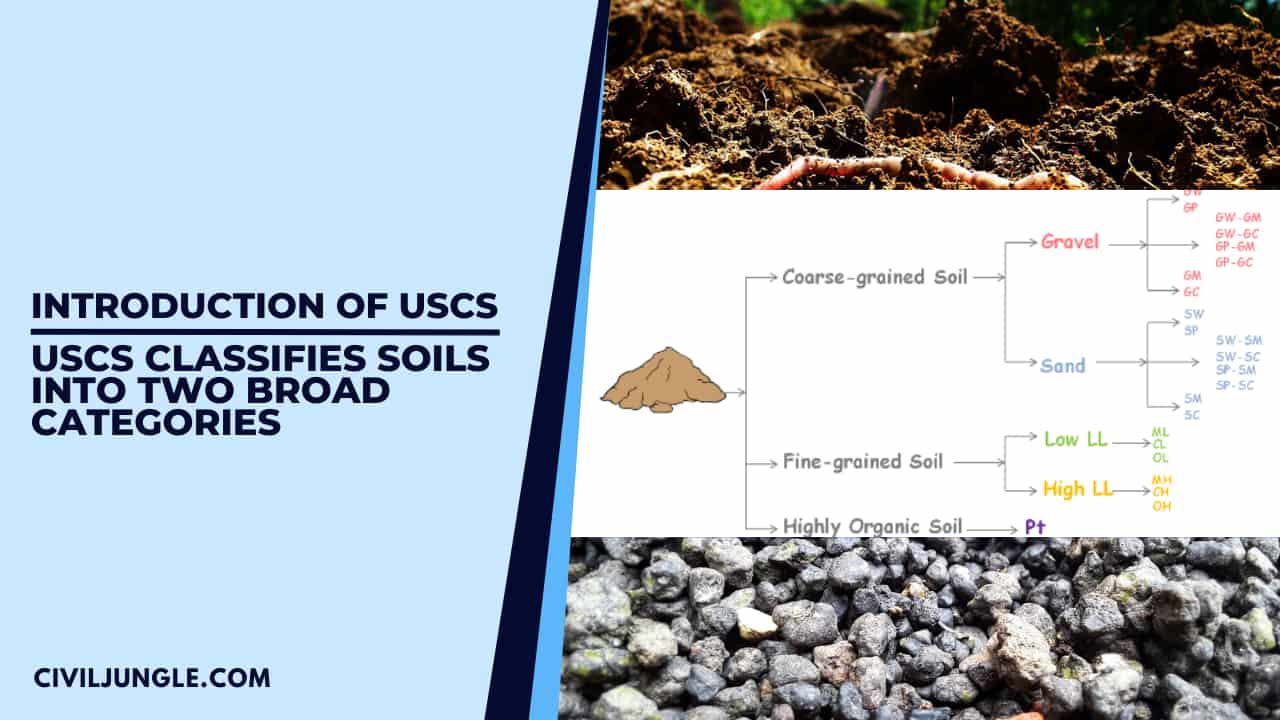
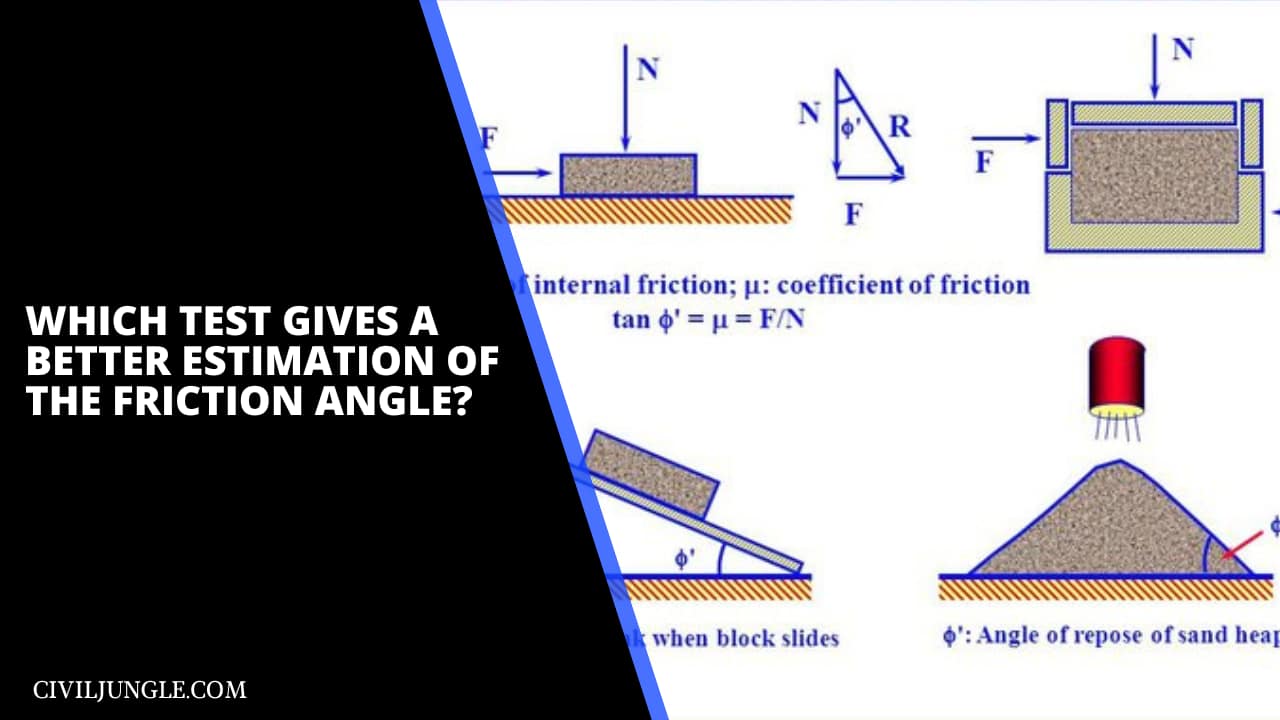
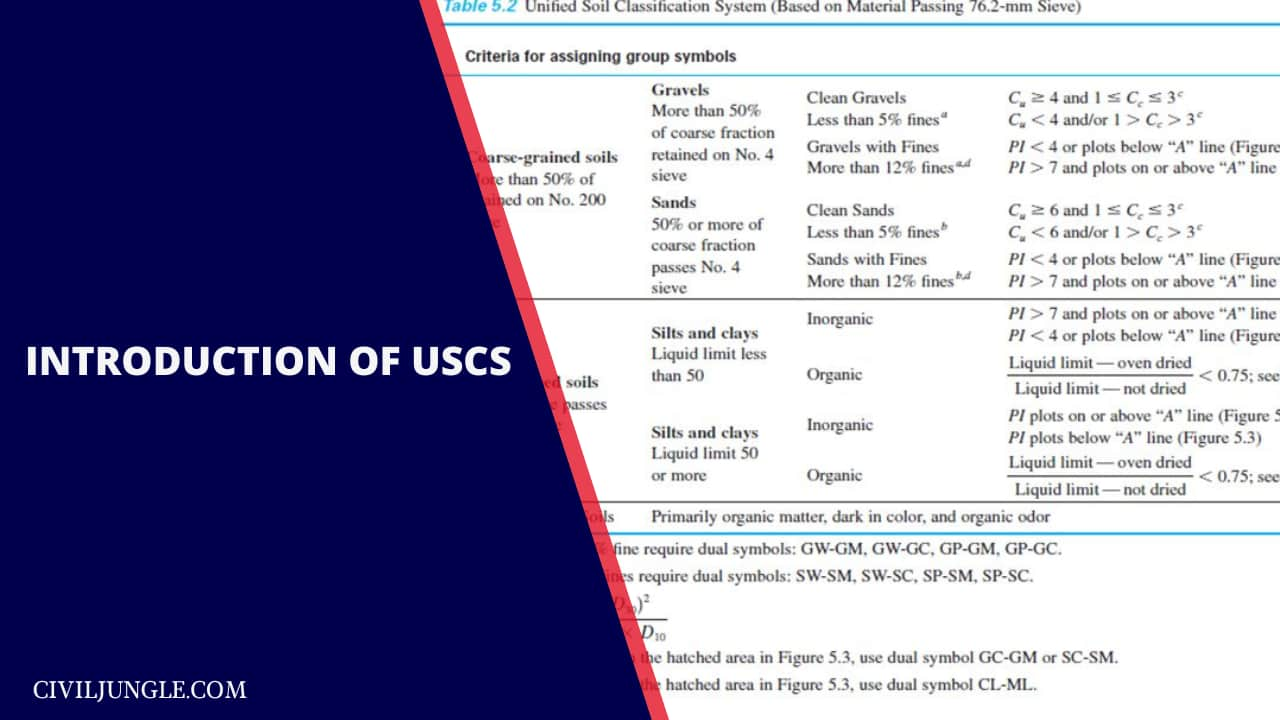
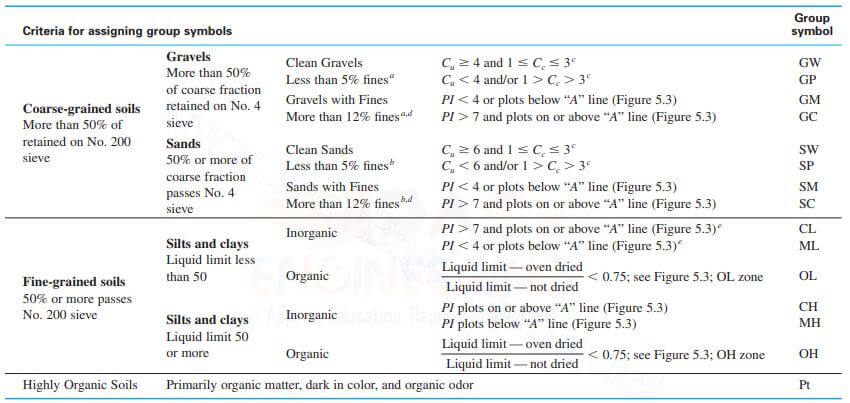
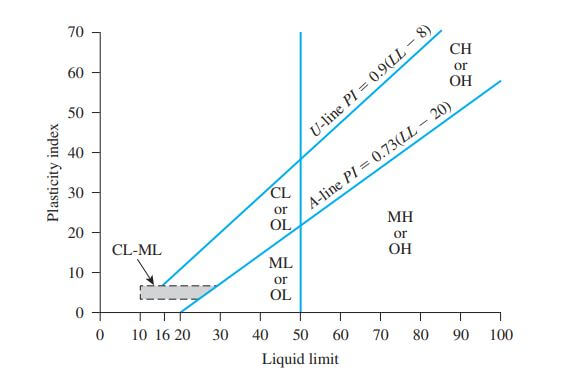
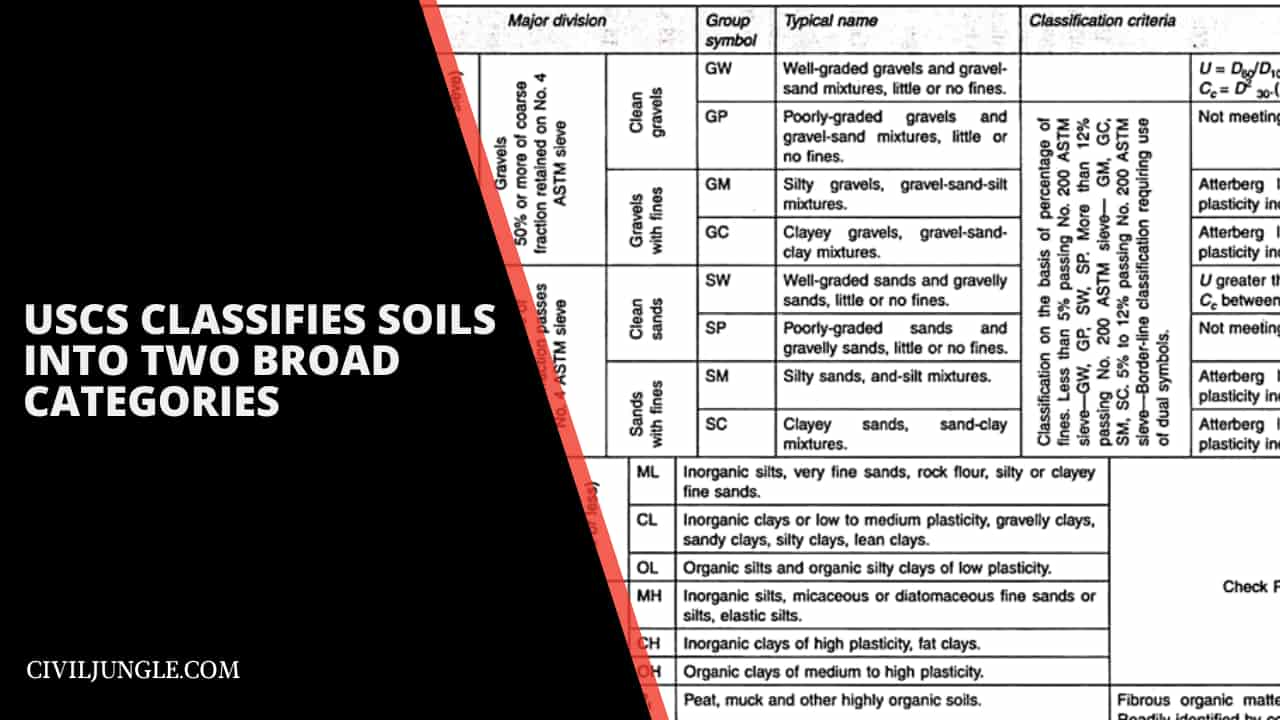
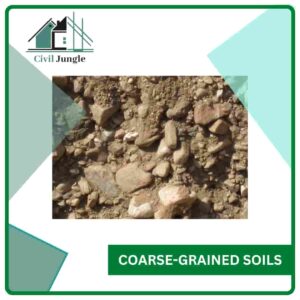
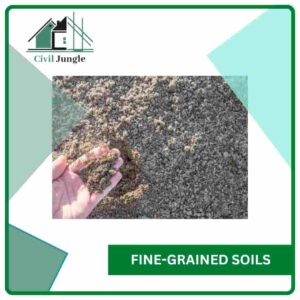
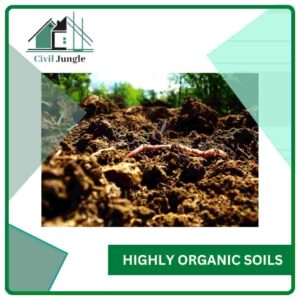

Leave a Reply